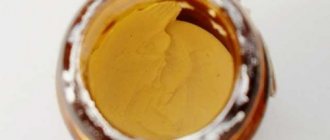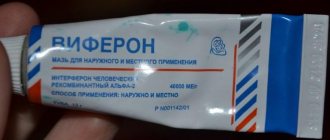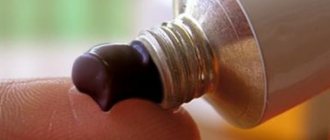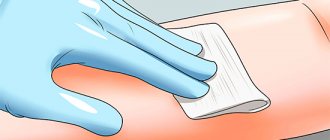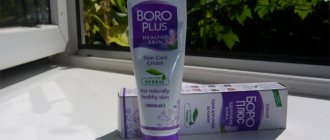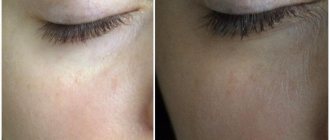Release form and composition
Release form Active substance content, mg Additional components Packaging
Solution 5 sodium chloride 900 mg, sodium dihydrogen phosphate dihydrate 300 mg, distilled water (up to 100 ml) Bottles with a capacity of 100 ml.
Tablets 250 Potato starch Stearic acid Talc In blisters of 10 pcs. The package may contain 1, 2 or 5 blisters.
Vaginal suppositories 125 Polyethylene glycol 400 and 1500 Cylindrical suppositories. Blister pack contains 10 pcs. 250 500
Vaginal gel 1000 Propylene glycol Carbopol Propyl parahydroxybenzoate, disodium edetate, sodium hydroxide, distilled water. Aluminum tube with a capacity of 30g.
Gel 10 methyl parahydroxybenzoate, propyl parahydroxybenzoate, carbomer 940, disodium edetate, sodium hydroxide, propylene glycol, distilled water. Tubes of 15 g.
10 ethyl alcohol, synthetic olbrot, stearic acid, glycerol, sodium lauryl sulfate, methyloxybenzoate, propyloxybenzoate, distilled water
The drug in the presented forms of release is produced all over the world. Its cost depends on the country of manufacture and minor differences in the composition of auxiliary components.
Metronidazole ointment is popular. Thanks to its composition and properties, it effectively combats skin problems, is affordable and does not require a prescription.
Properties
The ointment has a uniform consistency. It is easy to apply and absorbs quickly enough, leaving virtually no greasy residue. The active substance begins to act after complete penetration into the layers of the epidermis.
Metronidazole effectively fights pathogens without affecting healthy cells. It prevents the spread of infection, suppresses inflammatory processes and has a soothing effect on irritated areas of the skin. The ointment is used not only for the treatment of infectious and fungal diseases of the epidermis, but also for preventive purposes.
Properties
Metronidazole gel has a local effect, preventing the appearance of acne, which is due to slow oxidation in tissues. In addition, the application of the gel can reduce the production of oxygen, radicals and hydrogen peroxide by leukocyte blood cells. This way it is possible to relieve inflammation on the skin.
Metronidazole is ineffective in cases of chronic diseases of the sebaceous glands that provoke the appearance of acne. In this case, the active components of the gel will not have the desired effect, since they will not be able to reduce the production of sebum. The effect of Metronidazole does not apply to mites that appear in the follicles of hair follicles and sebaceous secretions.
The Metronidazole gel contains the smallest amount of the active substance metronidazole, which determines its minimal absorption into the bloodstream and distribution throughout tissues and organs. It is possible, however, that metronidazole can reach the fetus through the placental barrier and breast milk.
Recommendations before use
Before taking Metronidazole orally for acne, you should make sure there are no contraindications.
During the treatment period, you should not drink alcohol. The combination of the main drug and Amoxicillin is contraindicated for adolescents under 18 years of age.
Since the antibacterial component can lead to the development of leukopenia, during the entire treatment it is necessary to monitor the blood composition by taking tests.
Under no circumstances should the drug be taken without a doctor's prescription, as this can lead to serious consequences.
Contraindications and interactions with other drugs
Metronidazole is used in the treatment of infections caused by bacteria that are intolerant to the main active substance. It is especially effective in the fight against Trichomonas. For the treatment of epidermal diseases, it is preferable to use ointment. Unlike gel, it is made on a fat basis, which softens and moisturizes the skin. After application, it remains on the surface longer, so the therapeutic effect is longer.
Gels for external and vaginal use are produced on a water basis. They are quickly absorbed and do not leave greasy marks.
The pharmacological action of the drug is based on the fact that it penetrates the cellular structure of bacteria. By suppressing the production of nucleic acid, which is an integral part of the DNA of microorganisms, Metronidazole kills them.
Since Metronidazole ointment is used for external use, the occurrence of any side effects caused by the action of the active substance is doubtful. The main component is practically not absorbed into the blood. It is processed by the body and eliminated naturally.
However, you must be prepared for the possible consequences of using the drug:
- allergic reaction to any component in the form of hives and rashes;
- lacrimation (mainly due to the drug getting into the mucous membrane of the eye);
- peeling and dryness of the upper layers of the skin;
- burning in the area of application.
Side effects of using vaginal gel are as follows:
- irritation in the genital area;
- vulvitis;
- urinary problems;
- change in stool consistency (diarrhea or constipation);
- pain syndrome in the lower abdomen and lumbar region;
- nausea, feeling of dry mouth;
- increase or decrease in the number of white blood cells.
When using ointments and gels containing Metronidazole, it is necessary to take into account its interaction with other medications or specific components:
- simultaneous use of Metronidazole with Disulfiram increases the risk of negative effects on the central nervous system;
- the use of drugs that depress the nervous system (barbiturates) increases side effects;
- combination with drugs containing lithium increases the concentration of this component in the plasma, which can cause intoxication of the body;
- complete incompatibility with ethanol;
- sulfonamides increase the antimicrobial effect of Metronidazole.
When consulting with a doctor, you must provide information about medications that are used regularly or in courses. This will help you choose the most effective treatment regimen.
Adverse reactions with the use of Metronidazole gel develop quite rarely. Basically, these are skin reactions, which are manifested by the following symptoms:
- Various types of rash.
- Discomfort in the area of application, accompanied by itching, dryness, burning, peeling, swelling and hyperemia of the skin.
- If you apply the gel close to your eyes, you may experience lacrimation and tingling in the eyeballs.
Medicines for topical use based on metronidazole are prohibited from use by those who have demonstrated hypersensitivity to the components of the drug, including the excipients in the gel.
The use of Metronidazole is also prohibited in the first trimester of pregnancy and during lactation (it is possible to interrupt breastfeeding for the period of treatment).
Since the concentration of the active substance when used topically is minimal, it is impossible to exceed the dosage. Therefore, an overdose of the drug is excluded.
The use of Metronidazole does not lead to reactions with other drugs. However, doctors warn against using the gel simultaneously with anticoagulants, as this may cause an increase in prothrombin time.
Metronidazole gel is applied to the entire area of affected skin. The composition is convenient to use, as it does not leave greasy shine or stains, is quickly absorbed and allows you to apply cosmetics almost immediately.
Apply the gel carefully to the area around the eyes and avoid contact with the eyes. If this happens, you need to rinse your eyes with plenty of running water.
special instructions
Ointment, cream and gel based on metronidazole are applied to the entire affected area of the skin. They do not leave behind stains or marks. After their application, it is possible to use various cosmetics.
May immobilize treponemes and lead to a false-positive Nelson test.
A red-brown color may occur in the urine (due to the presence of a water-soluble pigment resulting from the metabolism of metronidazole).
We invite you to familiarize yourself with Hellebore water for lice and nits
Contraindications
Gel "Metronidazole" is used for various dermatological diseases, namely such as:
- Acne, including vulgar acne.
- Post-steroid and other types of rosacea.
- Seborrhea and eczema of various origins.
- Skin lesions with ulcers, including those caused by diabetes mellitus, varicose veins and trophic ulcers.
- Poorly healing wounds on the skin, bedsores.
- Anal fissures and external hemorrhoids.
The indications for Metronidazole gel must be strictly followed. To get a visible effect, you need to use the gel twice a day. Before application, the skin should be cleaned and dried with a soft cloth. On average, treatment with Metronidazole should be at least four months. However, a noticeable result will occur after three weeks of using the gel.
Metronidazole ointment is a drug with a narrow spectrum of action. However, its use in the treatment and prevention of various skin diseases is very effective. What does it help with:
- rosacea;
- inflammation of the sebaceous glands (acne);
- poorly healing wounds;
- initial stage of bedsores;
- burns;
- oily seborrhea or seborrheic eczema;
- anal fissures with hemorrhoids;
- trophic ulcers on the lower extremities, provoked by varicose veins or diseases of the endocrine system.
Metronidazole is actively used for gynecological purposes. Vaginal gel is used in gynecology for the treatment and prevention of the following diseases:
- vaginitis;
- urethritis;
- trichomoniasis;
- treatment of candidiasis in men.
Metronidazole-based ointments are also used by cosmetologists to treat inflammation of the facial skin.
The use of Metronidazole is contraindicated in the following cases:
- blood disease (leukopenia);
- disruptions in the functioning of the central nervous system;
- liver or kidney failure;
- individual intolerance to the components of the drug;
- first trimester of pregnancy.
If a woman used Metronidazlol in late pregnancy, it should be discontinued during lactation. The active component is absorbed into the blood and excreted in milk in concentrations identical to those absorbed in plasma.
Metronidazole
Metronidazole is an active substance in many dosage forms due to its wide spectrum of action. The drugs are produced by many domestic and foreign pharmaceutical factories.
The therapeutic line includes a solution for infusion, vaginal suppositories, and enteric-coated tablets. External preparations have also been synthesized based on an antimicrobial chemical compound:
- Metronidazole gel 0.75% and 1% is used in gynecology for the treatment of urogenital infections;
- Metronidazole gel 1% is used in dermatology for the treatment of primary and secondary infections of the face and body.
Metronidazole cream with a denser, thicker consistency is intended for the treatment of chronic infectious skin lesions. The active ingredients are released gradually, providing a long-lasting therapeutic effect. The pharmacy assortment also includes Metrogyl Denta gum gel with metronidazole.
It is included in therapeutic regimens for infectious inflammation of the gums and tongue. Recently, a gel with metronidazole, Metrogyl Plus, has appeared on the market. It contains the antimycotic agent clotrimazole, which allows the drug to be used in the treatment of mixed infections.
Composition and release form
Metronidazole ointment is available in the form of a transparent gel with a slight yellowish tint and no specific odor. It is packaged in aluminum tubes of 15, 30 g. Metronidazole vaginal gel comes with an applicator for introducing the product into the vagina. Each tube is enclosed in a cardboard box along with an annotation.
According to the instructions for use of ointment with metronidazole, its auxiliary composition is represented by the following components:
- ethyl alcohol;
- disodium salt EDTA;
- methyloxybenzoate;
- carboxypolymethylene;
- propylene glycol;
- triethanolamine;
- propyloxybenzoate;
- purified water.
Auxiliary ingredients increase the therapeutic activity of the active substance. They ensure rapid and complete absorption, uniform distribution in inflammatory areas. Auxiliary components form a thin film on the surface of the skin. It serves as reliable protection against re-entry of pathogenic microorganisms into tissues.
Pharmacology and pharmacokinetics
The therapeutic effect of the gel for external use Metronidazole (Metrogyl) is due to the properties of its active ingredient. Upon contact with microbial cells, its 5-nitro group is restored. This leads to disruption of RNA replication, and then the death of bacteria and protozoa. Bacteroides, peptococci, clostridia, Trichomonas, and Giardia have not developed resistance to the chemical compound. When using products with metronidazole, the skin condition quickly improves:
- acute and sluggish inflammatory processes are stopped;
- the severity of pain, swelling, and itching decreases.
This is interesting: Can stress cause IBS?
The ability of the drug to suppress the production of oxidants by neutrophils has been established. Thus, the use of Metronidazole cream and its analogs prevents premature cell destruction. When applied externally, the active substance accumulates in the systemic circulation in extremely low concentrations.
The therapeutic effect of the drug appears several hours after application. And the symptoms disappear completely after about 2-3 weeks of regular use.
Indications for use
Vaginal metronidazole ointment is prescribed to patients with colpitis, vulvovaginitis, and trichomonas vaginitis. It is used in the treatment of urogenital infections caused by anaerobes and protozoa. Metronidazole cream is used for application to the penis for balanoposthitis in men. What else does the medicine help with:
- burns, bedsores, wounds, trophic ulcers, eczema complicated by bacterial infection;
- acne, rosacea, accompanied by signs of infection.
Metronidazole gel (ointment) for the face only helps against acne that occurs due to poor skin condition. If their formation is provoked by gastrointestinal diseases, then other treatment methods are used.
The external remedy is used to prevent infection of wounds, burns, and deep cracks. For this purpose, it is prescribed in the postoperative period, at the stage of rehabilitation of injuries with associated skin injuries.
Instructions for use
Metronidazole ointment is intended for external use. According to the instructions, it should be applied to cleansed and dried skin. The product is applied in a thin layer to the entire damaged surface, without rubbing. The ointment should be absorbed on its own.
The procedure is carried out 2-3 times a day. The duration of the course is determined by the doctor and, as a rule, is no more than 2 months. Usually the result is noticeable after 3 weeks of therapy.
During a course of medications based on Metronidazole, you must adhere to the following rules:
- Avoid drinking alcoholic beverages. Therapy in combination with ethanol may cause dizziness, vomiting, and abdominal pain;
- during treatment of sexually transmitted diseases, refrain from intimacy;
- It is advisable to use several forms of Metronidazole within one course under the supervision of a physician. It is possible to reduce the level of leukocytes in the blood to a critical minimum;
- It is advisable to avoid prolonged exposure to the open sun. UV rays weaken the effect of the active component;
- to increase the effectiveness of acne treatment, it is recommended to use a combination of tablets and ointment;
- treatment of diseases in women in late pregnancy is carried out only as prescribed by a doctor and under his supervision;
- After applying the cream, it is recommended to use moisturizers, because the drug dries out the skin;
- After the procedure, it is necessary to completely remove any remaining product from your hands. Its contact with the mucous membrane of the eye can lead to injury to the retina. If the ointment does get into your eyes, they must be immediately rinsed with running water.
The use of any medicine requires strict adherence to the instructions or recommendations. Violation of the system of use can lead to the opposite result:
- untimely interruption or irregular use of the ointment promotes the development of microflora that is resistant to the action of the active substance, that is, it is addictive. To restore balance, it is sometimes necessary to resort to more aggressive medications;
- a decrease in immunity is possible, leading to allergic reactions.
Mode of application
The main source of information about the indications for use of any drug is the instructions for use.
Indications for the use of this medicine are:
- Acne. Including those that appear in adolescence during puberty. In this case, it is better to use cream.
- Rosacea, also known as rosacea. To eliminate it, it is optimal to choose acne gel with metronidazole.
- With prolonged decompensation of hemorrhoids, when the chance of developing inflammatory processes caused by microorganisms sensitive to the drug increases sharply. In such a situation, ointment is suitable.
- Seborrheic dermatitis. Since increased exudation is often observed with this disease, it makes sense to choose drying agents. The ideal choice is metronidazole cream.
- Skin defects associated with impaired tissue trophism. For example, bedsores, trophic ulcers in varicose veins of the lower extremities. Depending on the severity of the condition, you may need to take metronidazole cream or tablets.
Despite the fact that the instructions for use do not provide for the use of Metronidazole for tick-borne skin pathology (it was mentioned that this drug has no effect on these parasites), nevertheless, the medication is indicated for demodicosis as a local treatment.
The form of the medicine and its dosage are selected by the attending physician. The principle of using meronidazole depends on what the patient is being treated for, the severity and duration of the disease. Prescribed only from 3 years of age; for children under 12 years of age, the dosage is calculated by weight.
Pills
Metronidazole is taken with meals, washed down with water or milk. Calculation of the dose, taking into account the patient’s body weight – 7.5 mg per 1 kg of weight. Take Metronidazole 250 500 mg per day. The number of appointments and duration of therapy are calculated based on the severity of the pathology. Children under 5 years of age are prescribed medication at the rate of 10 mg per kilogram of weight.
Metronidazole for cystitis is taken twice a day, 2 tablets of 250 mg or 1 tablet of 500 mg. The course of treatment can last 7-18 days.
In complicated forms of the disease, the daily dose can be increased to 1500 mg, and a single dose of 500 mg of metronidazole three times a day.
Suppositories
For the treatment of vaginitis, urethritis, and trichomoniasis, metronidazole suppositories are prescribed. They are administered in the morning and at night, excluding sexual contact. A common treatment regimen using vaginal suppositories with mitronidazole is twice the use of suppositories of 500 mg.
The use of metronidazole suppositories according to the instructions can be prescribed once, 2 grams. The course lasts 10 days.
Gel, ointment and cream
These forms are used externally, with the exception of the gel, which can be an analogue of Metronidazole suppositories and is used internally intravaginally.
Metronidazole in the form of an ointment (cream, gel) is applied to the damaged area twice a day in a small amount. It will take seven days to get rid of acne; therapy for more complex lesions can last up to one and a half months. The dose of the vaginal method is approximately 5 grams in the morning and evening.
Injection
Prescribed for intravenous procedures for complex infections or if it is not possible to take the medicine in any other way.
For adults and children over 12 years of age, the dosage is calculated at 500 mg by slow stream or drip route of administration. The time between injections is 8 hours, the maximum dose is 4 grams of Metronidazole.
For children under 12 years of age, the procedure is prescribed up to three times a day at the rate of 7.5 mg per kilogram of weight.
Apply the product to previously cleansed skin. Distribute with massage movements in a thin layer. The frequency of use is 2 times a day. The duration of therapy depends on the severity of the disease and the general condition of the skin. To enhance the effect, you can make applications by applying the product to a bandage or gauze. Should be changed three times a day.
- The course of treatment is 3 - 9 weeks. The therapeutic effect occurs after several weeks of use. To consolidate the results, it is recommended to continue treatment for up to 4 months. If it is necessary to use the drug for a long time, it is recommended to alternate the cream with the gel.
- During treatment, you should avoid exposure to the sun if the product is applied to the face. Exposure to ultraviolet radiation on damaged skin is undesirable.
- Long-term use and application to large areas of the skin provokes the development of adverse systemic reactions. If any, you should reduce or stop using the cream.
- It is strictly necessary to take precautions to avoid contact of the cream with mucous membranes. Do not apply it near the eyes. In case of contact with mucous membranes, wash off with plenty of water.
If there is no effect within 1 week, it is recommended to consult a specialist. If side effects occur during treatment, stop therapy immediately.
- Rosacea, including post-steroid acne.
- Acne vulgaris.
- Trophic ulcers of the lower extremities resulting from diabetes mellitus or varicose veins.
- Burn.
- Bedsores.
- Infectious skin lesions caused by bacteria sensitive to the action of Metronidazole.
- Poorly healing wounds.
- Oily seborrhea, seborrheic dermatitis.
- Haemorrhoids.
- Anal fissures.
The cream is applied in a thin layer to the area of damaged skin, previously cleaned of impurities. Application should be repeated twice a day - in the morning and evening. If necessary, a pressure bandage is applied on top. According to the instructions, the duration of treatment is 3-9 weeks. A noticeable effect develops after 3 weeks of constant application of the cream. To speed up the healing process, you can alternate the use of cream and gel with the same active substance every 12 hours. If necessary, the course of treatment is repeated.
For the treatment of acne vulgaris, the cream is prescribed as an addition to taking antibacterial drugs. The drug application regimen for wound treatment is selected individually.
Prescribed for various infections caused by exposure to anaerobic bacteria: various streptococci, bacteroides and fusobacteria. The medicine is often used after surgical inflammation.
Metronidazole is effective against:
- Pneumonia and sepsis
- Diseases of the central nervous system and brain abscess
- Bacterial endocarditis
- Diseases of joints and bones of an infectious nature
- Various infections of the pelvic organs and abdominal cavity
- Treats trichomoniasis and urethritis in women and men
- To eliminate giardiasis
- For chronic alcoholism and gastritis
- For radiotherapy against tumors
- Trophic ulcers and wounds
- Demodicosis
- Various acne
- Trichomoniasis, vaginitis, ureplasma
- Seborrheic dermatitis
- Cracks in the anus.
The medicine is recommended for use in dentistry. Helps with periodontal disease and purulent-inflammatory processes.
For many infectious diseases, doxycycline is used as an additional therapy.
Read more about the method of treating acne with Metronidazole here.
To learn more about the treatment of bacterial vaginosis, read the article: Metronidazole against bacterial vaginosis.
Various symptoms affect the way the drug is used. The dosage differs depending on age characteristics and types of disease. In this case, the prescription is prescribed by the attending physician. The specialist will also determine how many days you can take the medicine. Doxycycline is often prescribed along with the drug. Tablets are taken after meals or during meals.
For adults:
- For giardiasis, 750-1000 mg per day is recommended. Tablets are used. In this case, the dose is divided into three times
- The recipe for amebiasis suggests 1.5 grams per day, in tablets, divided into three parts. Also used as an injection solution
- Trichomoniasis can be treated with 500 mg of the drug, divided into 2 parts. Treatment is carried out for at least 10 days. Trichomoniasis treats ointment, suppositories, gel and tablets
- Infections in gynecology: vaginitis and urethritis in women are treated with 250 mg, taken twice a day. Suppositories, tablets and cream are used. The drug should be taken for about 10 days
- Urethritis in men goes away after 10 days of taking the medicine. In this case, tablets are prescribed in a dosage of 500 mg, which are taken in two doses.
- Nonspecific vaginitis is treated within 7 days. In this case, it is recommended to use 500 mg tablets, divided into two times
- Anaerobic infections can be treated within 7-10 days. In this case, the dosage per day is 400 mg tablets.
The solution is used as follows. It is taken into account that 1 ml of solution contains 5 mg of medication:
- 100 ml of the drug is administered intravenously for about half an hour.
- For kidney problems, the next dose should be no earlier than 12 hours later
- To prevent inflammatory processes on the day of surgery, 100 ml is administered before and after surgery, every 8 hours. The course should not last longer than 10 days.
Children over 12 years of age are usually prescribed the same dosages as adults.
An ointment or gel is prescribed for application to the skin or mucous membranes. In this case, the procedure is performed in the morning and evening hours. In gynecology, ointment and gel can be used for treatment for 7-30 days. Recommended amount 500 mg.
Suppositories are prescribed at 500 mg per day, treatment is carried out for no more than five days.
For children under 12 years old:
- For giardiasis, the daily dose for children 2-5 years old is 250 mg, for children 6-10 years old – 375 mg, and for 11-15 years old, the dose increases to 500 mg. In this case, the dosage is divided into three doses, and the course of treatment takes 7 days.
- For anaerobic infections, it is necessary to take 7.5 mg per 1 kg of the child’s weight. The dosage is also divided into three parts
- Trichomoniasis in children over 10 years of age is treated within 10 days. In this case, you need to drink 500 mg of the drug in two doses.
The medicine affects the placenta, so you can take the medicine during pregnancy only after consulting a doctor. The instructions help you understand the prescribed dosages.
This drug should not be taken in the first trimester. In the second and third trimester, it can be used as prescribed by the treating doctor.
Systemic adverse reactions
Systemic side effects are practically excluded and may be due to increased sensitivity to metronidazole. This is also possible if the gel is used for a long time or the affected area of the skin is too large. Systemic reactions manifest themselves as follows:
- Dizziness.
- Dry mouth, changes in taste, namely a metallic taste.
- Nausea followed by vomiting.
- Decreased appetite and sudden weight loss.
- Headaches and pain in the abdominal area.
- Constipation and diarrhea.
In addition, the following undesirable effects from treatment may occur:
- lacrimation, if the medication is applied very close to the eyes;
- redness of the skin;
- peeling;
- slight dryness and burning.
If these negative reactions occur, the dosage should be reduced. If the unpleasant symptoms do not subside, then the treatment is interrupted, in which case you need to contact a specialist to change the medication.
What are the contraindications for Metronidazole gel?
The medication should not be prescribed at the beginning of pregnancy, when the internal organs of the fetus are developing. The drug is approved for use starting from the 4th month of pregnancy.
Metronidazole is not compatible with breastfeeding, so during therapy the baby must be switched to formula.
Side effects of the substance Metronidazole
During topical use of metronidazole-based products, side effects are quite rare. Of these, the most commonly observed are:
- rashes of various origins;
- unpleasant manifestations at the sites of application of the ointment, accompanied by burning, dryness, peeling, swelling, hyperemia;
- treating the skin near the eyes can increase lacrimation and unpleasant symptoms in the eyeballs.
Side effects occur in extremely rare cases:
- as a consequence of individual intolerance to the components contained in the ointment;
- as a result of prolonged use;
- with a wide impact.
We invite you to familiarize yourself with the process of feeding the ciliate slipper.
All these unpleasant moments are expressed by the following symptoms:
- dizziness;
- changes in taste sensations, dry mouth;
- nausea accompanied by vomiting;
- lack of appetite, followed by the appearance of anorexia;
- headaches and discomfort in the abdominal area;
- diarrhea and constipation.
As for contraindications, ointment based on metronidazole is not recommended for people:
- with hypersensitivity to this component;
- those suffering from leukopenia;
- with problems in motor coordination;
- with damage to the central nervous system, in particular epilepsy;
- for liver problems, if treatment requires increased dosages;
- women expecting a child in the first trimester of pregnancy;
- women who are breastfeeding. If treatment is absolutely necessary, then it is recommended to interrupt lactation for this entire time.
To improve the condition of the skin when treating with Metronidazole ointment, care must be taken to reduce the factors that provoke new rashes:
- accompany the entire treatment with a special diet that excludes salty, fatty, spicy and sweet foods;
- you need to be able to properly cleanse the skin and use products suitable for your skin;
- you should take care of the proper functioning of the digestive tract, which will help remove toxic substances from the body;
- Before therapy, it is advisable to undergo a medical examination and identify possible abnormalities in the body’s functioning that negatively affect the skin. In this case, helminthic infestation, gastrointestinal diseases and hormonal dysfunction should be excluded.
Hypersensitivity (including to other nitroimidazole derivatives), leukopenia (including a history), organic lesions of the central nervous system (including epilepsy), liver failure (if large doses are prescribed), pregnancy (1st trimester ), lactation.
From the gastrointestinal tract: diarrhea, loss of appetite, nausea, vomiting, intestinal colic, constipation, unpleasant “metallic” taste and dry mouth, glossitis, stomatitis, pancreatitis.
From the nervous system and sensory organs: headache, dizziness, impaired coordination of movements, syncope, ataxia, confusion, irritability, depression, increased excitability, weakness, insomnia, hallucinations; with long-term therapy in high doses - peripheral neuropathy, transient epileptiform seizures.
From the genitourinary system: dysuria, cystitis, polyuria, urinary incontinence.
Allergic reactions: urticaria, skin rash, skin flushing, nasal congestion, fever.
Other: arthralgia, flattening of the T wave on the ECG; with long-term therapy in high doses - leukopenia, candidiasis.
Local reactions: with intravenous administration - thrombophlebitis (pain, hyperemia or swelling at the injection site). When used intravaginally - itching, burning, pain and irritation in the vagina; thick, white, mucous vaginal discharge without odor or with a faint odor, frequent urination; after discontinuation of the drug, vaginal candidiasis may develop;
Strengthens the effect of indirect anticoagulants. When taken simultaneously with lithium preparations, the concentration of the latter in plasma and the likelihood of developing symptoms of intoxication may increase. Phenytoin and phenobarbital reduce the effect of metronidazole by activating the liver microsomal system and accelerating metabolism and excretion.
Cimetidine inhibits the metabolism of metronidazole, which may lead to an increase in its concentration in the blood serum and an increased risk of side effects. Metronidazole is incompatible with alcohol (when taken together, an Antabuse-like syndrome develops). Concomitant use with disulfiram can lead to the development of various neurological symptoms (the interval between prescriptions is at least 2 weeks). It is not recommended to combine with non-depolarizing muscle relaxants (vecuronium bromide). Sulfonamides enhance the antimicrobial effect of metronidazole.
Metronidazole for intravenous administration should not be mixed with other drugs.
Analogs of Metronidazole gel
1. Cream "Rozamet". In addition to acne, it is intended for the treatment of rosacea. The concentration of the active component is one percent. The cream is well absorbed and has an antimicrobial effect. The course of treatment is 10 days.
2. "Metrogil". It is available in gel form, just like Metronidazole. An additional area of application is gynecology. It is also used to prevent the development of infection in the affected area.
3. Cream "Rosex". Shows activity against both gram-positive and gram-negative microorganisms. Apply to skin morning and evening. The course of treatment should be determined by a doctor.
Before replacing it with similar gels, you must carefully study the instructions and consult with your doctor. There are a lot of reviews about the Metronidazole gel.
All drugs containing Metronidazole as an active substance can be considered its analogues. The most common drug substitutes are:
- Metrogil;
- Trichopolum;
- Rosex;
- Rosamet.
The pharmacological properties and nature of the effects of the listed medications are similar to Metronidazole. They differ only in the number and composition of additional components.
Reviews
Reviews
Dmitry, 45 years old, Moscow: “Wounds on my hands are a common occurrence, I always scratch or cut myself somewhere. I was repairing my car and scratched my hand. The wound did not heal for a long time, apparently became inflamed and became infected. The surrounding skin turned red and itched. I bought Metronidazole cream. I applied it to the wound twice a day. Improvements were noticeable after just 2 days. Now I always keep the cream on hand.”
Yulia, 20 years old, Nizhny Novgorod: “Teenage acne has periodically bothered me since I was 15 years old. Now inflammation occurs periodically. Used many medications and cosmetics. Metronidzole cream helped me the most. I apply it directly to acne. The cream eliminates redness and inflammation well. The consistency is thick, but absorbs well. It's not expensive."
Lilia, 26 years old, St. Petersburg: “I have problem skin, closed comedones immediately become inflamed and become pimples. I found a solution to my problem - Rosamet metronidazole cream, which I apply to my entire face in a thin layer. Rozamet is greasy and white streaks remain when applied, however, after a while it is completely absorbed. After a while, an oily sheen appears on the face, which is corrected by matting wipes. Cream with metronidazole perfectly fights inflammation. »
We invite you to familiarize yourself with the drug Trichopolum instructions for use
Mostly consumers respond positively to this ointment. They note the ideal effect of this drug on the skin and its ability to effectively and quickly eliminate inflammatory processes on it.
But for some people, the ointment did not help due to the fact that side effects appeared after starting therapy and it had to be stopped.
This drug is used to a greater extent to get rid of pimples and acne. But its benefits and effectiveness in the treatment of other diseases mentioned above have been confirmed.
Under no circumstances should you self-medicate and prescribe this ointment yourself. It is better to consult your doctor before using it.
Its positive effects and lasting clinical effect played a large role in the popularity of the ointment.
